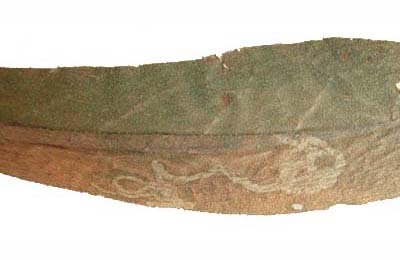|
||||||
|
Phytomyza
autumnalis Griffiths, 1959 Phytomyza
autumnalis Griffiths, 1959. Entomologist's Gaz. 10:
103 |
|||||||||||||||||||||||||||||||||||||||||||||||||||||||||||||||||||||||||||||||||||||||||||||||||||||||||
Leaf-miner: Mine long, distinctly greenish. Pupation in mine (Spencer, 1972b: 88). Branched, upper-surface corridor, with very irregular sides. Frass in isolared grains, maximally only 4 times their diameeter apart. Pupation within the mine (Bladmineerders van Europa).
Larva: The larvae of flies are leg-less maggots without a head capsule (see examples). They never have thoracic or abdominal legs. They do not have chewing mouthparts, although they do have a characteristic cephalo-pharyngeal skeleton (see examples), usually visible internally through the body wall. Posterior spiracles with 19-25 bulbs on long horns with bases that are wide and touching each other (Bladmineerders van Europa). Puparium: The puparia of flies are formed within the hardened last larval skin or puparium and as a result sheaths enclosing head appendages, wings and legs are not visible externally (see examples). White in early generations and black and shiny in autumn (Spencer, 1976: 504), posterior spiracles each with 20-25 bulbs (Griffiths, 1959: 103). Opaque, metallic black, in a puparial chamber (Griffiths, 1959a); the anterior spiracles penetrate the epidermis (Hering, 1957a) (Bladmineerders van Europa). Comments: Spencer (1972b: 88) suggested that the miner on Centaurea may be distinct from that on Cirsium even though the male genitalia appear to be identical. Hosts in Great Britain and Ireland:
Hosts elsewhere:
Time of year - mines: October-November (Spencer, 1990). Time of year - adults: Currently unknown. Distribution in Great Britain and Ireland: Common and widespread (Spencer, 1972b: 88) including Warwickshire (Robbins, 1991: 122). Shropshire and West Kent (NBN Atlas). Also recorded in the Republic of Ireland: Co. Tipperary (Tipperary) (Spencer, 1972b: 88). Distribution elsewhere: Widespread in continental Europe including Germany (Bladmineerders van Europa), Republic of Moldova and Poland (Fauna Europaea). NBN Atlas links to known host species:
British and Irish Parasitoids in Britain and elsewhere:
|
|
|
|
| External links: | Search the internet: |
| Biodiversity Heritage Library Bladmineerders van Europa British leafminers Encyclopedia of Life Fauna Europaea NBN Atlas NHM UK Checklist |
Find
using Google Find using Google Scholar Find images using Google |
| Last updated 10-Jul-2019 Brian Pitkin | ||

